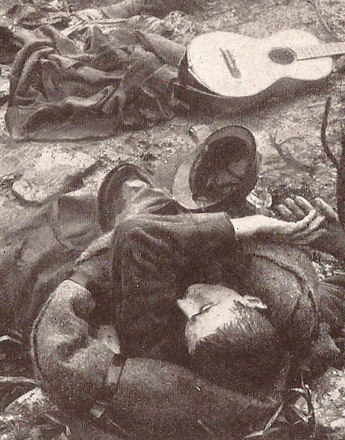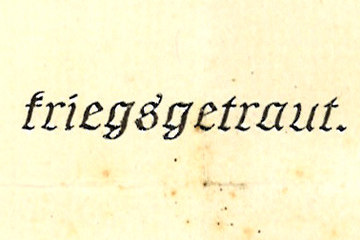The atrocities committed against Belgian and French civilians by German troops was a central focus of Allied war propaganda. Pictures of defiled and mutilated women and children were used to justify the war and to mobilise the population of the Allied countries.
Between August and October 1914 German troops committed brutal acts of violence against Belgian and French civilians. These “German atrocities” or “atrocités allemandes” cost 5,521 Belgian and 906 French civilians their lives. Rumours of mass rape and mutilation of Belgian and French women spread in the first weeks of the war. As a result, Belgium, France and Great Britain set up a committee of inquiry to document the German war crimes in accordance with the Hague Convention of 1907. The committee confirmed the reports of massive sexual assaults on the female civilian population by German soldiers.
The number of raped and mutilated women is difficult to determine today. Regardless of the specific dimension, the Allies considered the rapes to be a central component of the atrocities committed by the German troops. Stories of women being ravaged, breasts being cut off and children’s hands being amputated were widespread and depicted the German enemy as inhuman and impossible to negotiate a ceasefire with. The truth of these accusations is difficult to ascertain, but these horror scenarios nevertheless played an essential role in the construction of German atrocities for propaganda purposes.
Reports of atrocities and mass raping of Belgian and French women were used in the Allied countries to justify the war and the continued killing so as to prevent such acts and avenge the violence perpetrated against the women and children. The defence of family and sexual values became an essential element of Allied motivation. Apart from the mobilisation of the British and French people, the instrumentalisation for propaganda purposes of the German atrocities also served to influence neutral countries, particularly Italy and the United States.
The identification of the female victims with the nation played an important role in the Allied war propaganda. The ravaged woman became a symbol of a conquered (female) nation enduring the violence of a brutal (male German) invader. Belgium was also a neutral and innocent country that had been raped. Allied propaganda posters frequently showed innocent ravaged women as a metaphor for countries terrorised by German troops.
Tabloid newspapers, popular literature, postcards and cartoons disseminated the image of German barbarians and their Belgian and French victims. Not just individuals but the entire German people were accused of the atrocities. Germany became the ultimate evil power capable of committing the most atrocious deeds. The German war atrocities and their exploitation for propaganda purposes contributed significantly to the image of Germany as an enemy and to the moral legitimation for the war by the Allies.
Translation: Nick Somers
Daniel, Ute: Frauen, in: Hirschfeld, Gerhard/Krumeich, Gerd/Renz, Irina (Hrsg.): Enzyklopädie Erster Weltkrieg, Paderborn et al. 2009, 116-134
Gullace, Nicoletta F.: Sexual Violence and Family Honor: British Propaganda and International Law during the First World War, in: The American Historical Review (1997), 102/3, 714-747
Harris, Ruth: The “Child of the Barbarian”: Rape, Race and Nationalism in France during the First World War, in: Past & Present (1993), 141, 170-206
Horne, John/Kramer, Alan: Deutsche Kriegsgreuel 1914. Die umstrittene Wahrheit, Hamburg 2004
Kramer, Alan: „Greueltaten“. Zum Problem der deutschen Kriegsverbrechen in Belgien und Frankreich 1914, in: Hirschfeld, Gerhard/Krumeich, Gerd/Renz, Irina (Hrsg.): 'Keiner fühlt sich hier mehr als Mensch...'. Erlebnis und Wirkung des Ersten Weltkriegs, Essen 1993, 85-114
Rhoades, Michelle K.: Renegotiating French Masculinity. Medicine and Venereal Disease during the Great War, in: French Historical Studies (2006), 29/2, 293-327
-
Chapters
- Separation of husbands and wives and sexual mobility in the First World War
- Dwindling birth rates during the First World War
- "Mobilisation of the cradle"
- State control and social stigma
- Abstinence and satisfaction of needs
- Combatting venereal diseases in the Austro-Hungarian army
- “Resist from the outset”
- Sexual relief for soldiers
- Prevention or punishment
- Sexual assault in the First World War
- Sexual violence in Allied war propaganda






